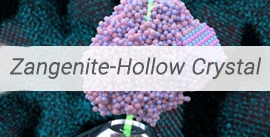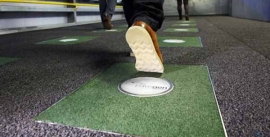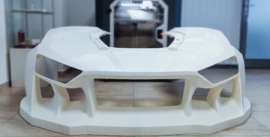 جدید
جدیدحفاظت از فلز در برابر تشعشع با نانوتیوب های کربنی
حفاظت از فلز در برابر تشعشع
با نانوتیوب های کربنی
[box type=”shadow” align=”alignright” ]
تیم پژوهشی دانشگاه MIT دریافته است که با ترکیب نانوتیوب های کربن به مقادری کمتر از ۲ درصد حجمی در حین ساخت، فلز به مراتب در برابر تشعشع مقاوم تر می شوند. اگر نانوتیوب ها به طور یکنواخت درون فولاد پخش شده باشند شبکه ای یک بعدی برای انتقال هلیم از درون فلز به بیرون ایجاد می کنند.[/box]
گروهی بین المللی از دانشمندان به رهبری دانشگاه MIT اخیرا کشف کرده است که اضافه کردن مقادیر اندکی از نانوتیوب های کربن به فلزات، مقاومت آن ها در بر تشعشع را به شدت بهبود می دهد. اگرچه پیشتر، اثر نانوتیوب های کربن بر فلزات دما پایین مانند آلومینیم در کند کردن فرآیند تخریب در عمر کاری در راکتورهای تحقیقاتی و صنعتی اثبات شده بود.
تشعشع تنها بر موجودات زنده اثر نمی گذارد بلکه موجب تخریب فلزات نیز می شود که این موضوع در راکتورهای هسته ای بسیار مهم است. قرار گرفتن پیوسته فلزات در معرض تشعشع رادیواکتیو موجب ترد شدن و متخلخل شدن فلزات می شود و این تخریب تا جایی ادامه پیدا می کند که فلز ترک خورده و در نهایت کاملا تخریب می شود. این موضوع سبب ایجاد مشکلاتی در ایمنی و بازده راکتورها می شود که از دید دانشمندان و مهندسان این حوزه بسیار مهم است.
مشکل از آنجا آغاز می شود که اتم های فلز در اثر بمباران ذرات رادیو اکتیو شکسته شده و به عناصر دیگر تبدیل می شوند. این پدیده سبب ایجاد حباب های کوچک هلیم ایجاد شود. اگر غواصی با سرعت از زیر آب بالا بیاید حباب های نیتروژن در خون اوایجاد شده و اثرات مخربی بر سلامتی وی می گذارد مشابه همین حالت نیز برای فلزات رخ می هد. حباب های هلیم در طول مرزدانه ها ایجاد شده و در نتیجه فلز متخلخل و ترد می شود و این روند تا جایی ادامه پیدا می کند که فلز می شکند.
تیم پژوهشی دانشگاه MIT دریافته است که با ترکیب نانوتیوب های کربن به مقادیری کمتر از ۲ درصد حجمی در حین ساخت، فلز به مراتب در برابر تشعشع مقاوم تر می شوند. اگر نانوتیوب ها به طور یکنواخت درون فولاد پخش شده باشند شبکه ای یک بعدی برای انتقال هلیم از درون فلز به بیرون ایجاد می کنند.
یک نکته جالب این است که ریخته گری و فورج فلزات نانوتیوب ها را تخریب کرده و آن ها را به کاربید تبدیل می کند، اما شکل تک بعدی آن ها حفظ می شود. این ساختار نه تنها به هلیم کمک می کند تا از درون فلز خارج شود بلکه راهی برای اتصال مجدد فلز و کاهش ترد شدن فلز ایجاد می کند.
علاوه بر بهبود مقاومت در برابر تشعشع ، تیم پژوهشی اعلام کرده اند که استفاده از نانوتیوب ها استحکام ماده را تا ۵۰ درصد افزایش می دهد.
در حال حاضر این روش برای آلومینیم مورد تایید قرار گرفته است که در دماهای پایین ذوب می شود اما تیم پژوهشی در حال اجرای آزمایش روی زیرکونیم است تا استفاده از این روش را در فلزاتی با دمای ذوب بالاتر آزمایش کنند.
[box type=”info” align=”alignright” width=”1124″ ]منبع : www.gizmag.com [/box]
[divider]
Carbon nanotubes shown to protect
metals against radiation damage
An international team of scientists led by MIT has discovered that adding small amounts of carbon nanotubes to metals makes them much more resistant to radiation damage. Though currently only proven in low-temperature metals like aluminum, the team says that the ability of the nanotubes to slow the breakdown process could improve the operating lifetimes of research and commercial reactors.
Radiation isn’t just bad for living things, it’s also bad for metals – which is unfortunate because nuclear reactors are full of the stuff. The constant exposure of metals to strong radiation makes them brittle and porous to the point where they crack and fail. Needless to say, this impacts the safety and economy of reactors, so preventing this is a high priority for scientists and engineers.
The problem is that as they are bombarded by radioactive particles the atoms in the metal transmutate and split. This causes tiny bubbles of helium to form in a sort of metallic case of the bends. Just as the bubbles of nitrogen that form in a diver’s blood if he ascends too quickly can cause damage, so do these helium bubbles that form along the borders of the crystalline grains that make up the metals. Eventually, the metal becomes porous and brittle and much more prone to fracturing.
The MIT team found that by mixing carbon nanotubes with the metal in quantities of less than two percent by volume during manufacturing, the metal becomes much more resistant to radiation. If the nanotubes are evenly distributed, they produce what the team calls a percolating one-dimensional transport network that channels the helium out of the metal before it can cause damage.
An example of how the researchers created aluminum with carbon nanotubes inside
One interesting point is that the casting and forging of the metals destroys the nanotubes by converting them to carbides, but they leave behind their one-dimensional shape in what the scientists compare to insects trapped in amber. This not only allows the helium to leak out, but also repairs the defects by providing a way for the metal to recombine, making it less brittle.
In addition to protection against radiation, the team says that the addition of the nanotubes improves the strength of the material by half, as well as improving its ductility.
Currently, the technique has only been proven for aluminum, which melts at a low temperatures, but the team is testing it on zirconium and is confident that it could be used generally in higher temperature metals.









دیدگاه کاربران